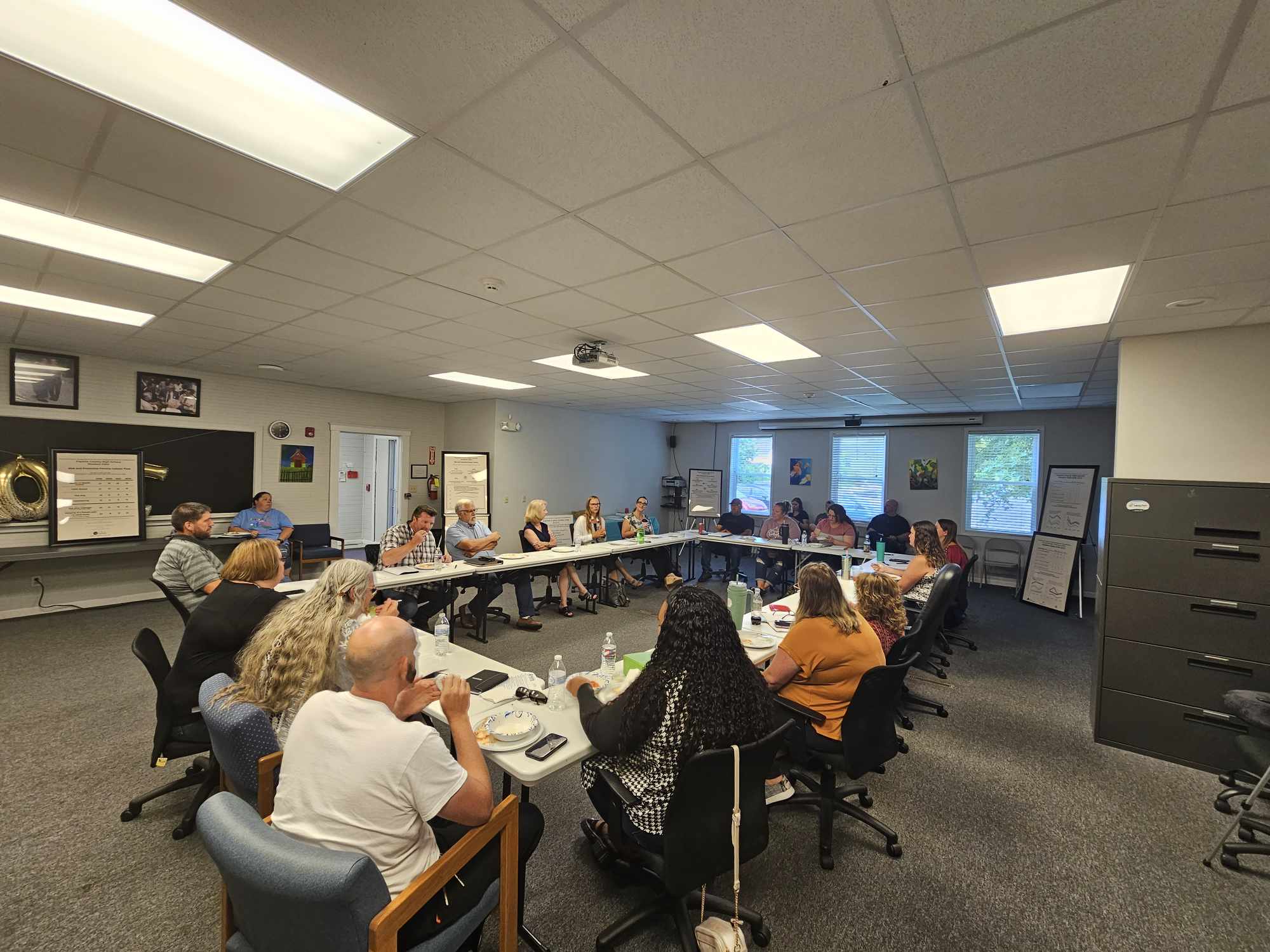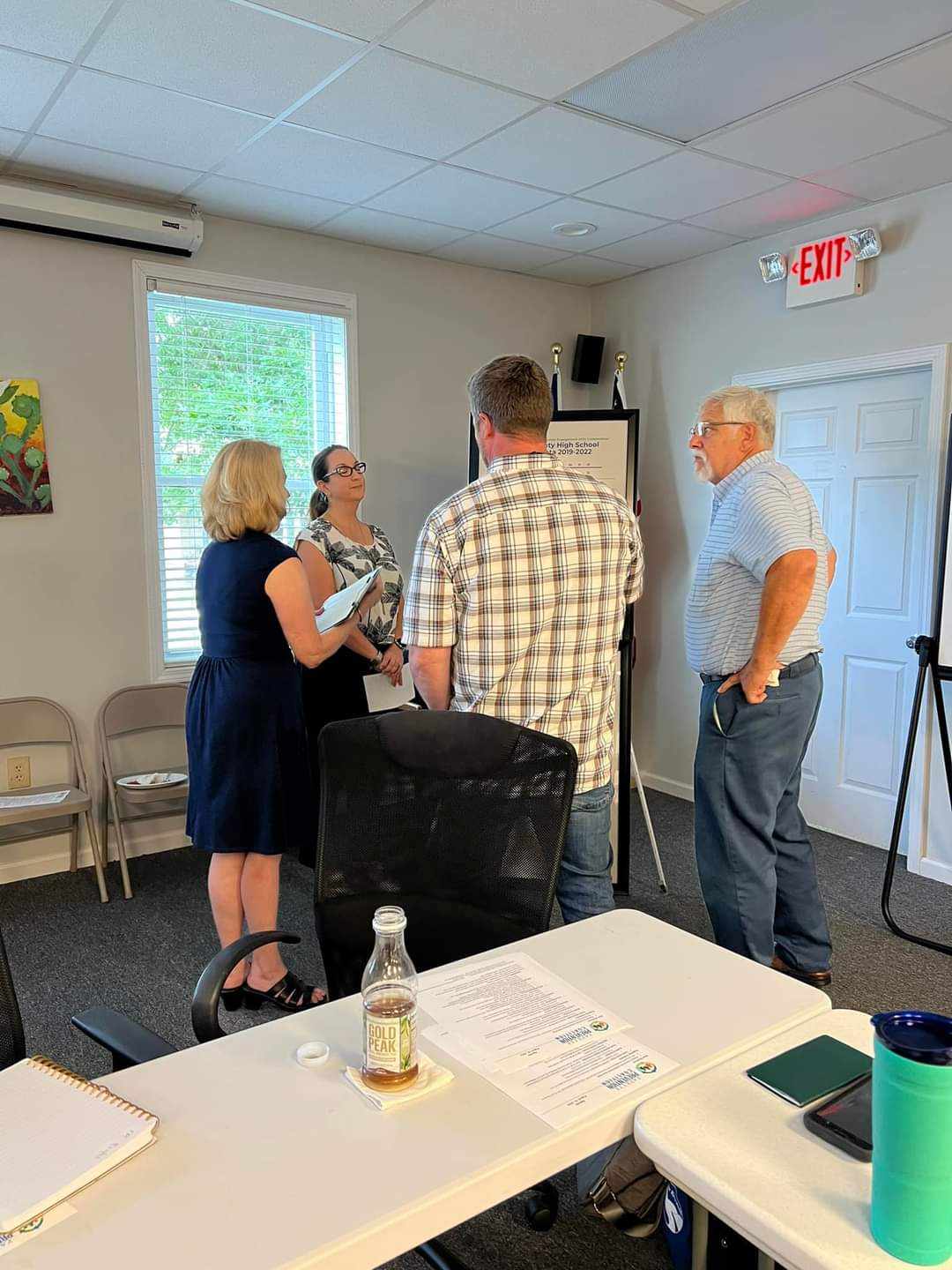|
Back to Success Stories
Community Data Walk
Hosted by:
Fayette Prevention Coalition

Please briefly describe your Communities Talk activity.
The Communities Talk activity we hosted was a Community Data Walk where we presented community statistics and risk factors for youth in our area. We went to Fayetteville PreK–8 School and Meadow Bridge High School, where we used four aluminum easels and easel sticky pads filled with data and placed them in the four corners of the room. This idea came from Community Anti-Drug Coalitions of America (CADCA), and we wanted to implement it through our coalition. The data showcased statistics from annual school surveys that questioned seventh through 12th graders, along with questions from another survey using the Icelandic Prevention Model. These questions included many different topics, some regarding vaping, alcohol, and marijuana. Examples of some of the data include the percentage of kids who say they were younger than 13 years when they first tried drinking as well as whether students have ever tried or in the last 30 days have tried alcohol or any other substances. During this walk, attendees were divided into four groups and spent about 7–10 minutes at each poster with a trained facilitator. Each group had a form and was encouraged to suggest solution-based ideas that could improve the data and their community. As a result of this event, we will partner with another school and use the data again, but we’ll be more intentional to make the atmosphere comfortable for the parents to share information and ask questions without our coalition telling them what to do. We are excited and look forward to building on the momentum of this Communities Talk activity.

How does alcohol and other drug misuse affect your community?

Alcohol and other drug misuse affects our community, as seen in our Fayette County data from the Fall 2022 survey. This survey shows that 31% of Fayette County High School students have “ever consumed alcohol,” and 17% of Fayette County High School students were “13 years old or younger when they first tried alcohol.” The survey also highlights that 23% of Fayette County Middle School students have “ever consumed alcohol,” and 21% of Fayette County Middle School students were “13 years old or younger when they first tried alcohol.”

Which prevention strategy(ies), as defined by SAMHSA’s Center for Substance Abuse Prevention, best fit your Communities Talk activity?
- Community-Based Process Strategy - focuses on enhancing the capacity of the community to address AOD issues through organizing, planning, collaboration, coalition building, and networking.
- Information Dissemination Strategy - focuses on improving awareness and knowledge of the effects of AOD issues on communities and families through “one-way” communication with the audience such as speaking engagements, health fairs, and distribution of print materials.

What goal(s) did you hope to accomplish with your Communities Talk activity?
- Hold meetings or discussion groups on alcohol and/or other drug misuse prevention.

Did you accomplish your goal(s)?
Yes

What challenge(s) did you face in planning your activity this year?
- Lack of interest from the community

How did you overcome these challenges?
We are still in the process of building interest and engagement in our events. We have learned a lot through trial and error but are still testing out a few things with the schools to do something a little more engaging for parents. It is a work in progress.

What are your next steps?

- Expand our coalition with new partnerships in the community

If you’ve conducted Communities Talk activities in prior years, how has your repeated participation contributed to progress in achieving your prevention goals?
Our repeated participation in Communities Talk has helped us learn what works and what doesn’t each time we participate. We keep improving our messaging, building on “Talk. They Hear You,” as it is a great campaign for consistent messaging. Last year we told parents what to do: Talk to your kids. This year we didn’t just tell them what to do, we presented them with information and explained to them why we recommend certain behaviors based on the data provided and explained it with the facilitators.

Organizations that conduct Communities Talk activities often involve other organizations in the planning and execution of events. Please indicate which type(s) of organizations you involved in your activity planning.
- Youth-led organizations
- Secondary schools
- State and local government agencies (e.g., public health departments)

Which of the following best describes the primary audience(s) for your Communities Talk activity?
- Teachers or other education staff
- Prevention specialists and volunteers
- Youth leaders (e.g., coaches, parks and recreation personnel, and scouting leaders)

How did you reach and engage your primary audience(s) to encourage them to participate in your activity?
In an effort to increase attendance at the event, we met with teachers and asked when we could do this event, and we engaged the teachers on a professional learning day when there were no students. We engaged our audience by asking them for solution-based suggestions to move the data in a favorable direction instead of telling them what to do. This facilitated discussion and made it more interactive.

Which Communities Talk resources (or other SAMHSA resources) were most helpful for your activity?
|
|